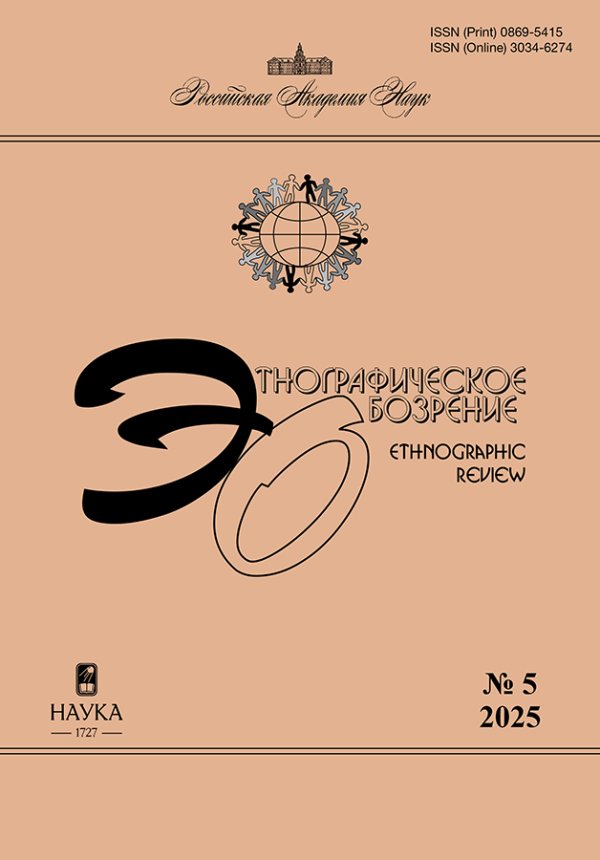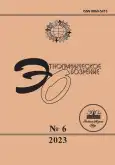Sumerian poem about Lugalbanda and parallels for one of its episodes
- Authors: Berezkin Y.E1
-
Affiliations:
- Peter the Great Museum of Anthropology and Ethnography (Kunstkamera), Russian Academy of Sciences
- Issue: No 6 (2023)
- Pages: 211-227
- Section: Articles
- URL: https://journals.rcsi.science/0869-5415/article/view/233764
- DOI: https://doi.org/10.31857/S0869541523060131
- EDN: https://elibrary.ru/MPCXIX
- ID: 233764
Cite item
Full Text
Abstract
Keywords
About the authors
Y. E Berezkin
Peter the Great Museum of Anthropology and Ethnography (Kunstkamera), Russian Academy of Sciences
Email: berezkin1@gmail.com
St. Petersburg, Russia
References
- Березкин Ю.Е. Африканское наследие в мифологии // Антропологический форум. 2021. № 48. С. 91-114.
- Березкин Ю.Е. Культурный континуум бореальной зоны Евразии и восточносибирский клин (по данным сравнительной мифологии и палеогенетики) // Археология, этнография и антропология Евразии. 2022a. Т. 50. № 2. С. 28-40.
- Березкин Ю.Е. После Проппа: мировое распределение популярных мотивов, отражающих конфликты внутри семьи // Этнографическое обозрение. 2022б. № 5. С. 148-165.
- Васильков Я.В., Гуров Н.В. Страна Аратта по древним письменным источникам // Вестник Восточного института. 1995. Т. 1. № 1. С. 12-66.
- Питулько В.В. Расселение и адаптация древнего населения Восточно-Сибирской Арктики в позднем плейстоцене - раннем голоцене. Дис. … докт. ист. наук. МАЭ РАН, Санкт-Петербург, 2022.
- Топоров В.Н. Авест. Θrita, Θtaētaona, др.-инд. Trita и др. и их индоевропейские истоки // Топоров В.Н. Исследования по этимологии и семантике. Т. 2 (Кн. 2). М.: Языки славянских культур, 2006. С. 479-504.
- Black J.A. et al. The Electronic Text Corpus of Sumerian Literature. Oxford: University of Oxford, 1998-2006. http://etcsl.orinst.ox.ac.uk
- Frog. Circum-Baltic Mythology? The Strange Case of the Theft of the Thunder-Instrument (ATU 1148B) // Archaeology, Religion, and Folklore in the Baltic Sea Region / Ed. D. Vaitkevičené, V. Vaitkevióius. Klaidépa: Klaipéda University, 2011. P. 78-96.
- Mifsud-Chircop G. Type-Index of the Maltese Folktale within the Mediterranean Tradition Area. PhD diss. Abstract. The University of Malta, Valetta, 1978.
- Mittermayer C. Enmerkar und der Herr von Arata. Ein ungleicher Wettstreit. Fribourg: Academic Press Fribourg; Vandenhoeck & Ruprecht, 2006.
- Schenda R. et al. (Hrsg.) Enzyklopädie des Märchens. Bd. 1-15. Berlin: De Gruyter, 1975-2015.
- Uther H.-J. The Types of International Folktales. Pt. 1-3. Helsinki: Suomalainen Tiedeakatemia, 2004.
- Wilcke C. Lugalbanda // Reallexikon der Assyriologie und Vorderasiatischen Archäologie / Hrsg. D.O. Edzard. Berlin; N.Y.: Walter de Gruyer, 1987-1990. Bd. 7. S. 117-132.
- Wilcke C. Vom klugen Lugalbanda // Erzählungen aus dem Land Sumer / Hrsg. K. Volk. Wiesbaden: Otto Harrassowitz, 2015. S. 203-272, 421-434.
- Zand K.V. Zu den Schreibungen des Anzud-Vogels in der Fāra-Zeit // Von Göttern und Menschen: Beiträge zu Literatur und Geschichte des Alten Orients. Festschrift für Brigitte Groneberg / Hrsg. D. Shehata, F. Weiershäuser, K.V. Zand. Leiden: Brill, 2010. S. 415-442.
Supplementary files










